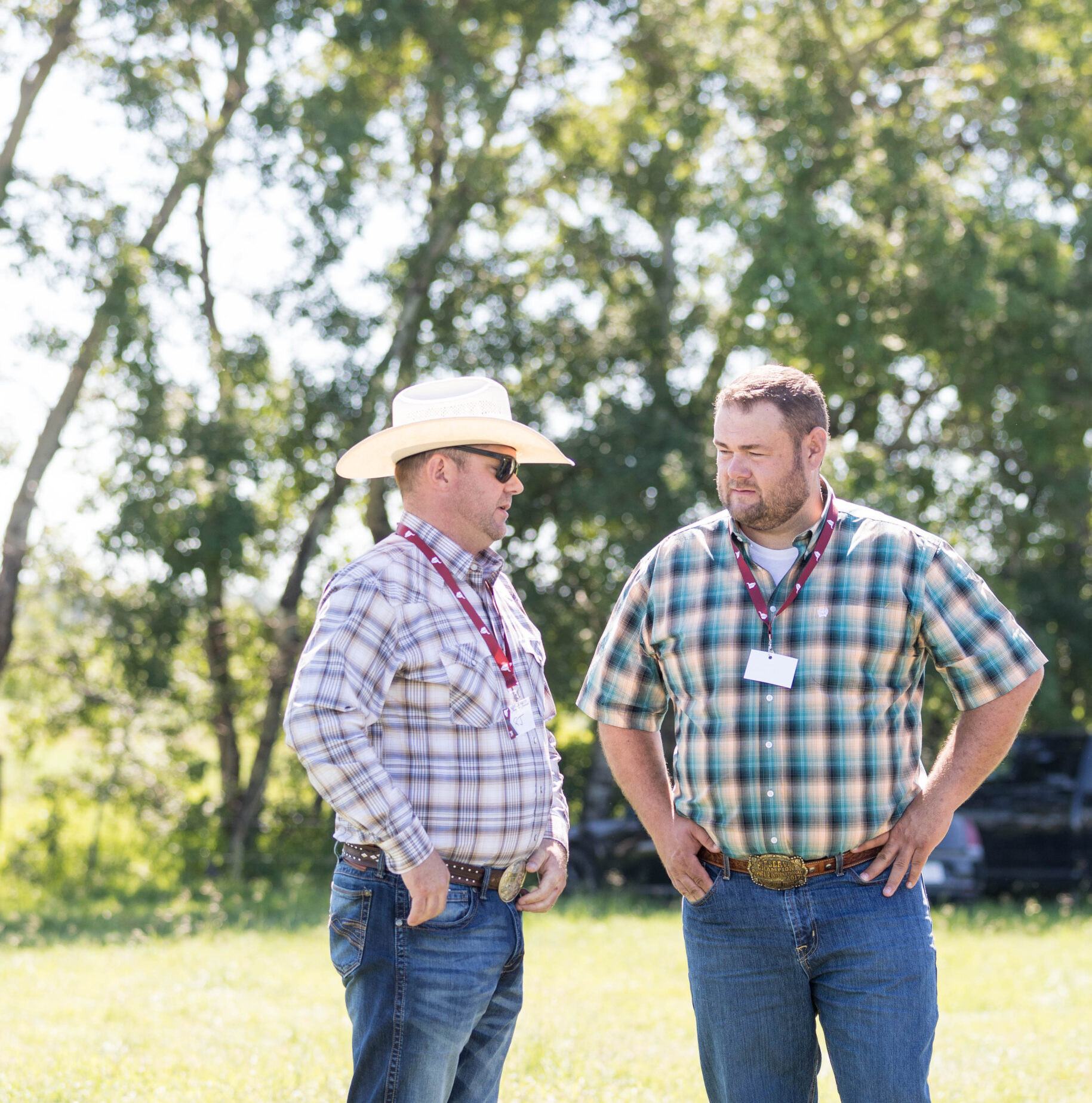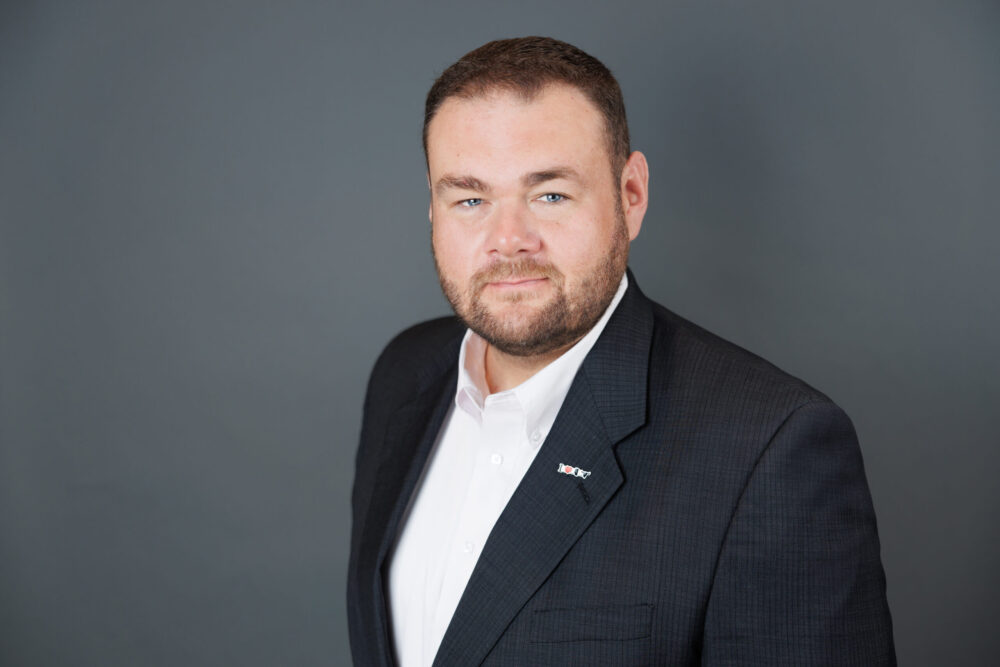AB Direct - Steers
Rail: 493.00-495.00 del
AB Direct - Heifers
Rail: 493.00-495.00 del
US Trade- Steers
Rail: ---
US Trade - Heifers
Rail: ---
Canadian Dollar
0.17

Reflecting on trade, tariffs, and industry challenges
Since being elected your ABP chair in March, it feels like we’ve jumped in head first! Literally, within the first hour or two after being appointed, we got right into some media scrums.
Since the timing of our AGM and the following Alberta Beef Industry Conference coincided with tariffs scheduled to take effect, there were plenty of questions about their impact on beef producers, which we addressed alongside our industry partners.
Since then, we’ve been fortunate that some of our tariff discussions have quieted down, for the time being. But we certainly continue to watch the situation closely. We have supported our national organization on some trade missions to meet with our U.S. counterparts, talking about how trade goes back and forth with Canada, both on feeder calves coming north and on fats headed south to support their packing industry. It seems state representatives are more aware than some national ones about how integrated our two countries are when it comes to trade on beef cattle and boxed beef, so it’s definitely good to help communicate more at a national level in both Canada and the U.S.
When we did our zone meetings this past year, one of our key takeaways from different regions was the need to open borders interprovincially. The feedback from producers pushed us to think this needed to be a focus, long before trade talks with the United States became a thing. Interprovincial trade has really moved to the forefront now with our provincial agriculture minister and even at the federal level, to get those trade discussions happening again. I think it’s really important we start to focus on seeing trade within boxed beef happen more east/west and not solely focused on moving beef north/south.
It’s no surprise improving business risk management tools, especially for the youth who are trying to get involved in beef production, is a big focus for me. There’s a lot of work happening around programs like Moisture Deficiency Insurance. Where I’m stepping into this is to facilitate further discussions on some of the improvements that have already been made, because I think programs like MDI have been very beneficial to a lot of producers in this province. With some of our outlook on provincial forecasts for this summer, I think MDI is going to be a program used quite extensively.
On Livestock Price Insurance, we continue to advocate for shared premiums within the federal and provincial governments. We really want to see that happen. We’re not there yet, but we’ve definitely opened up that discussion a lot further. Another focus for ABP is our continual work on improvements to AgriStability through the pilot project that happened with AFSC. We’re hoping to push that over the finish line. The federal and provincial governments have a lot of interest in seeing AgriStability work better for producers than it has in the past. With improvements and changes we hope to see a higher uptake of the program from producers.
We’re working through the resolutions from the AGM. Some are already in our policy handbook and we’ve been dealing with them, while others are just minor modifications. Wildlife issues are coming to the forefront more. We’re starting to see elk herds moving into regions of the province where producers didn’t see them before. And we’re hearing a lot of issues around feedstock management—whether it’s swath grazing, bale grazing, or even feed stacks. So we’re really working with the province on creating some further management tools. We received some resolutions around coal development and we’re trying to navigate that contentious issue, making sure environmental stewardship practices are handled properly within the mining industry.
Building on the work of our past chair, Brodie Haugan, growing communication within our industry remains a priority going forward. I’d say the big change is that traditionally, we’ve communicated what’s happened, or is happening. Now we’re starting to look more into the future. We’re asking our industry representatives who come to the table to think about that. As an organization we want to start really discussing what our plans are for the next five years. Where do we see things going, how do we start to prepare, and how do we be more insightful into the future? As a progression on communication, we want to start to navigate what things look like going forward.
In March we attended the CCA’s AGM in Ottawa. I was there as a CCA rep, but also as the new chair of ABP. At the time, government was prorogued, so we didn’t have an opportunity to meet with many MPs. So one thing we’re really excited for is the upcoming Stampede Summit—the event ABP co-hosts every year during the Calgary Stampede. We conduct our own internal meetings, we also invite and have meetings with many of our federal representatives, including hopefully, the new federal agriculture minister and MPs from across the country. Premier Danielle Smith has been able to attend in the past, along with our provincial Agriculture and Irrigation Minister RJ Sigurdson. It’s also where we announce our Environmental Stewardship Award winner. It’s a very big event, and one that allows us to get in front of many government officials to meet face to face, to create dialogue about our industry.
Producer engagement is another priority. Some zones still need people to join us as delegates. We want to increase communication with producers through this magazine, ABP Daily, the website, and our podcast The Bovine. We’re really hopeful producers can see the level of engagement that ABP is doing, not just to the consumer base, but also to producers we’re representing.
Overall, markets have stayed relatively strong. Reports out of the U.S. reflect one of their largest heifer slaughters in history, and are above year to date numbers as well. So there are indications heifer retention and rebuilding of the cow herd hasn’t happened yet. Producers are watching the skies to see what the weather does, and hopefully we can start to see a little bit of a rebound to get the cow herd growing again.
As we head into summer, I encourage you to stay engaged, follow the markets, and be willing as a business to pivot and find the opportunities within the industry right now, to take advantage of them. The prices are strong, things are good overall, so work to improve and grow, utilize the business risk management tools that are in front of you today, and let’s look forward to a prosperous fall weaning time.
This article was first published in Volume 5 Issue 2 of ABP Magazine (May 2025). To access the full digital magazine or subscribe to the print edition, click here.

